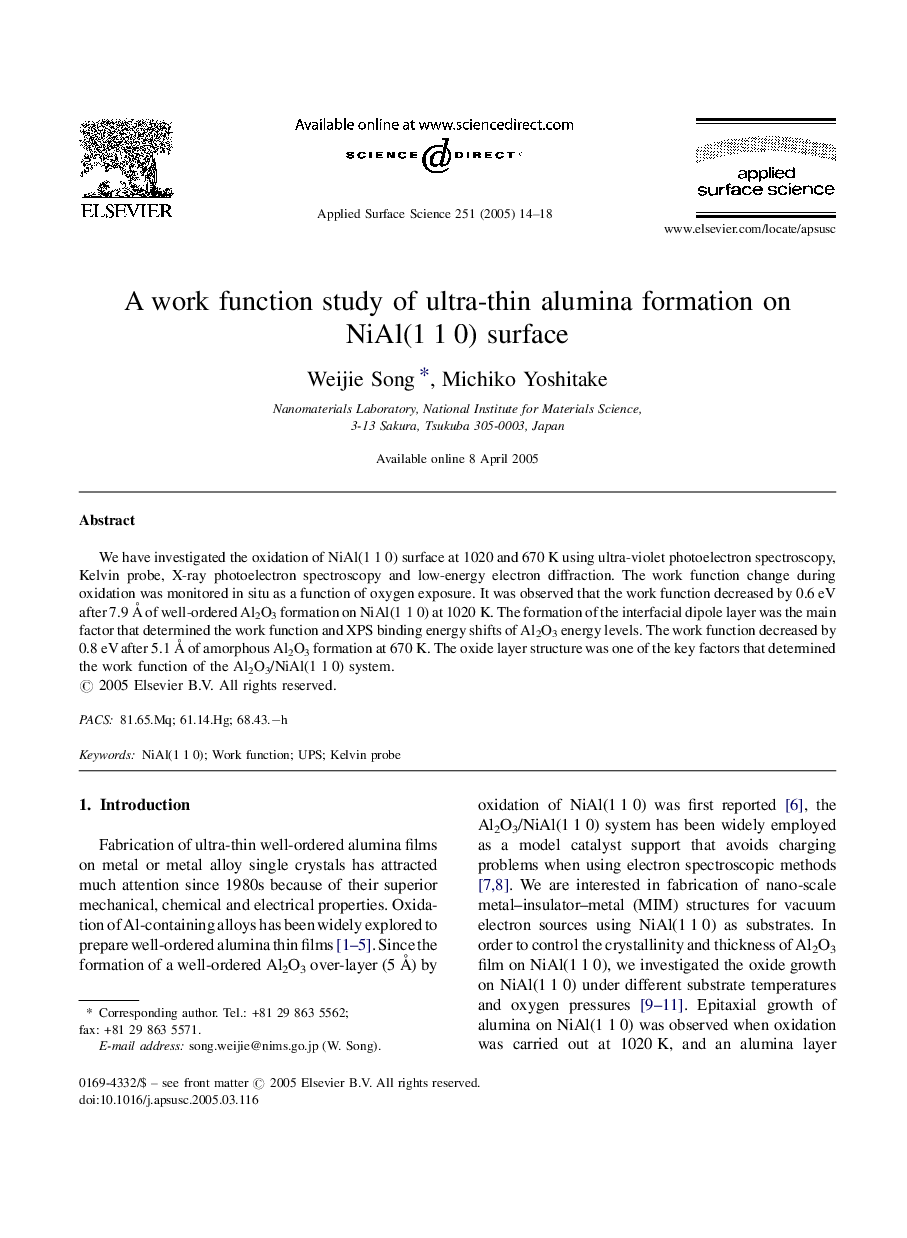| Article ID | Journal | Published Year | Pages | File Type |
|---|---|---|---|---|
| 9572279 | Applied Surface Science | 2005 | 5 Pages |
Abstract
We have investigated the oxidation of NiAl(1Â 1Â 0) surface at 1020 and 670Â K using ultra-violet photoelectron spectroscopy, Kelvin probe, X-ray photoelectron spectroscopy and low-energy electron diffraction. The work function change during oxidation was monitored in situ as a function of oxygen exposure. It was observed that the work function decreased by 0.6Â eV after 7.9Â Ã
of well-ordered Al2O3 formation on NiAl(1Â 1Â 0) at 1020Â K. The formation of the interfacial dipole layer was the main factor that determined the work function and XPS binding energy shifts of Al2O3 energy levels. The work function decreased by 0.8Â eV after 5.1Â Ã
of amorphous Al2O3 formation at 670Â K. The oxide layer structure was one of the key factors that determined the work function of the Al2O3/NiAl(1Â 1Â 0) system.
Related Topics
Physical Sciences and Engineering
Chemistry
Physical and Theoretical Chemistry
Authors
Weijie Song, Michiko Yoshitake,
